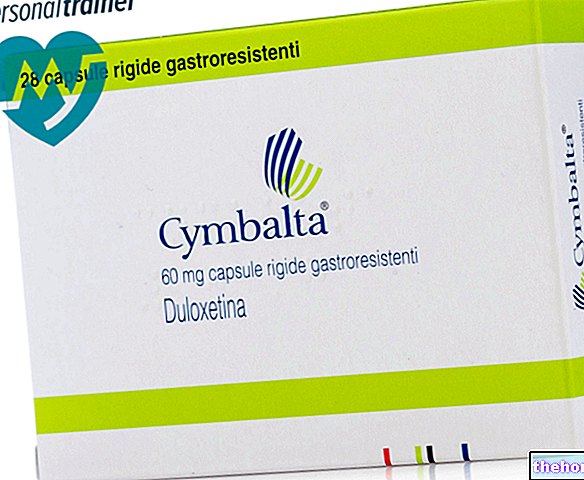Active ingredients: Tobramycin
TOBRAL 0.3% eye drops, solution
Tobral package inserts are available for pack sizes:- TOBRAL 0.3% eye drops, solution
- TOBRAL 3 mg / ml prolonged-release eye drops
- TOBRAL 0.3% ophthalmic ointment
Why is Tobral used? What is it for?
PHARMACOTHERAPEUTIC CATEGORY
Antibiotic of the aminoglycoside family.
INDICATIONS
TOBRAL 0.3% eye drops, solution is indicated in adults and children from one year of age onwards for the treatment of infections of the eye and adnexa, caused by bacteria sensitive to tobramycin: acute, sub-acute and catarrhal conjunctivitis. chronic; blepharitis; bacterial keratitis; dacryocystitis; pre and post-operative prophylaxis in anterior segment surgery.
Contraindications When Tobral should not be used
Do not use TOBRAL 0.3% eye drops if you are allergic (hypersensitive) to tobramycin or any of the other ingredients of this medicine (listed in the "Composition" section).
Precautions for use What you need to know before taking Tobral
- Sensitization to topically administered aminoglycoside antibiotics may occur in some patients. If hypersensitivity develops during use of this medicinal product, treatment should be discontinued.
- Cross-hypersensitivity to other aminoglycosides may occur, therefore the possibility that patients sensitized to topically administered tobramycin may also be sensitive to other topically and / or systemically administered aminoglycosides should be considered.
- Serious adverse reactions such as neurotoxicity, ototoxicity and nephrotoxicity have occurred in patients treated with systemic tobramycin. Caution is advised when TOBRAL is co-administered with systemic tobramycin therapy.
- As with other antibiotics, prolonged use of TOBRAL eye drops may induce abnormal growth of non-sensitive organisms, including fungi. If superinfection occurs, appropriate therapy should be instituted.
- It is recommended not to wear contact lenses when treating an "eye infection."
- TOBRAL eye drops contain benzalkonium chloride, which can cause eye irritation and is known to discolour soft contact lenses. Avoid contact with soft contact lenses. If patients are allowed to wear contact lenses, yes you must instruct them to remove their contact lenses before applying TOBRAL eye drops and to wait at least 15 minutes after instillation of the dose before reinserting them.
Interactions Which drugs or foods can change the effect of Tobral
Tell your doctor or pharmacist if you are taking or have recently taken any other medicines, including those obtained without a prescription. If you are using more than one eye topical medicine, allow at least 5 minutes between instillation of each medicine. Eye ointment should be used last.
Incompatibility
The tyloxapol component contained in the eye drops is incompatible with tetracycline.
Warnings It is important to know that:
Pregnancy and breastfeeding
Ask your doctor for advice before taking any medicine. If you are pregnant or conceiving possible, or if you are breastfeeding, ask your doctor for advice before using this drug.
Pregnancy
Data from topical ocular use of tobramycin in pregnant women do not exist or are limited in number. Studies in animals have shown reproductive toxicity. Tobramycin is not recommended during pregnancy.
Pregnancy
It is unknown whether tobramycin is excreted in human milk following topical ocular administration. Tobramycin is excreted in breast milk following systemic administration. A risk to infants cannot be excluded. A decision must be made whether to discontinue breast-feeding or to discontinue tobramycin therapy taking into account the benefit of breast-feeding for the child and the benefit of therapy for the woman.
Driving and using machines
TOBRAL does not affect or transiently affects the ability to drive and use machines. Transient blurred vision or other visual disturbances may affect the ability to drive and use machines. If blurred vision occurs after instillation, the patient should wait until the vision clears before driving and operating machinery.
Important information relating to an excipient contained in TOBRAL 0.3% eye drops, solution
TOBRAL 0.3% eye drops contain a preservative (benzalkonium chloride) which can cause eye irritation and is known to discolor soft contact lenses. The use of contact lenses is not recommended during the treatment of a " eye infection If you are allowed to wear contact lenses, remove them before using TOBRAL 0.3% eye drops and wait 15 minutes before putting them back on.
Dosage and method of use How to use Tobral: Dosage
Use TOBRAL eye drops only for instillation into the eye.
Always use this medicine as directed by your doctor or pharmacist.
Instill in the conjunctival sac two drops four times a day in the acute forms and three times a day in the chronic forms, according to medical prescription.
Pediatric population
TOBRAL 0.3% eye drops can be used in children from one year of age onwards at the same doses as for adults. Safety and efficacy in children less than one year of age have not been established and no data are available.
If a drop misses your eye, try again.
Overdose What to do if you have taken too much Tobral
OVERDOSE
If you are using more medicine than you should, immediately wash your eye with lukewarm water.
However, no toxic effects are expected. Do not use the medicine again until it is time for the next administration.
WHAT TO DO IF YOU HAVE FORGOTTEN TO TAKE ONE OR MORE DOSES
If you forget to use TOBRAL 0.3% eye drops, continue treatment with the next dose as scheduled. However, if it is almost time for the next dose, skip the missed dose and return to the regular dosing schedule. Do not use a double dose to make up for a forgotten dose.
IF YOU ARE IN ANY DOUBT ABOUT THE USE OF THIS MEDICINAL PRODUCT, CONTACT YOUR DOCTOR OR PHARMACIST
Side Effects What are the side effects of Tobral
Like all medicines, TOBRAL 0.3% eye drops can cause side effects, although not everybody gets them.
The following adverse reactions listed in the table below were reported during clinical trials with tobramycin eye drops and / or ophthalmic ointment and are classified according to the following convention: very common (≥1 / 10), common (≥1 / 100,
The table below lists additional adverse reactions identified from post-marketing experience. Frequency cannot be estimated from the available data.
Description of the adverse events highlighted
Serious adverse reactions such as neurotoxicity, ototoxicity and nephrotoxicity have occurred in patients treated with systemic tobramycin. Sensitization to topically administered aminoglycosides may occur in some patients.
Reporting of side effects
If you get any side effects, talk to your doctor or pharmacist. This includes any possible side effects not listed in this leaflet. You can also report side effects directly through the Italian Medicines Agency, website: https://www.aifa.gov.it/content/segnalazioni-reazioni-avverse
By reporting side effects you can help provide more information on the safety of this medicine
Expiry and Retention
Do not use after the expiry date stated on the outer carton and bottle. The expiry date refers to the last day of the month.
Do not store above 25 ° C.
The expiry date refers to the product in intact packaging, correctly stored.
The product should not be used more than 30 days after first opening the container.
Keep this medicine out of the sight and reach of children.
Medicines should not be disposed of via wastewater or household waste. Ask your pharmacist how to throw away medicines you no longer use. This will help protect the environment.
Composition and pharmaceutical form
COMPOSITION
100 ml contain: Active ingredient: tobramycin 0.3 g. Excipients: tyloxapol, benzalkonium chloride, boric acid, anhydrous sodium sulfate, sodium chloride, purified water.
PHARMACEUTICAL FORM AND CONTENT
Sterile ophthalmic solution. 5ml dropper bottle.
Source Package Leaflet: AIFA (Italian Medicines Agency). Content published in January 2016. The information present may not be up-to-date.
To have access to the most up-to-date version, it is advisable to access the AIFA (Italian Medicines Agency) website. Disclaimer and useful information.
01.0 NAME OF THE MEDICINAL PRODUCT
TOBRAL 0.3%
02.0 QUALITATIVE AND QUANTITATIVE COMPOSITION
Eye drops, solution
100 ml contain:
Active principle: tobramycin 0.3 g.
Excipients with known effect: benzalkonium chloride.
Ophthalmic ointment
100 grams contain:
Active principle: tobramycin 0.3 g.
For the full list of excipients, see section 6.1.
03.0 PHARMACEUTICAL FORM
Eye drops, solution. Ophthalmic ointment.
04.0 CLINICAL INFORMATION
04.1 Therapeutic indications
TOBRAL is indicated in adults and children from one year of age onwards for the treatment of eye and adnexal infections caused by bacteria sensitive to tobramycin: acute, subacute and chronic catarrhal conjunctivitis, blepharitis, bacterial keratitis; dacryocystitis; pre and post-operative prophylaxis in anterior segment surgery.
04.2 Posology and method of administration
Eye drops, solution
Instill in the conjunctival sac two drops four times a day in the acute forms and three times a day in the chronic forms, according to medical prescription.
Ophthalmic ointment
Apply in the conjunctival sac two to four times a day, according to medical prescription.
Pediatric population
TOBRAL eye drops, solution and TOBRAL ophthalmic ointment can be used in children from one year of age onwards at the same dosage as for adults. Currently available data are described in section 5.1.
Safety and efficacy in children less than one year of age have not been established and no data are available.
Method of administration
For ophthalmic use only
04.3 Contraindications
Hypersensitivity to the active substance or to any of the excipients listed in section 6.1.
04.4 Special warnings and appropriate precautions for use
- Sensitization to topically administered aminoglycoside antibiotics may occur in some patients. If hypersensitivity develops during use of this medicinal product, treatment should be discontinued.
- Cross-hypersensitivity to other aminoglycosides may occur, therefore the possibility that patients sensitized to topically administered tobramycin may also be sensitive to other topically and / or systemically administered aminoglycosides should be considered.
- Serious adverse reactions such as neurotoxicity, ototoxicity and nephrotoxicity have occurred in patients treated with systemic tobramycin. Caution is advised when TOBRAL is co-administered with systemic tobramycin therapy.
- As with other antibiotics, prolonged use of TOBRAL eye drops or ophthalmic ointment may induce abnormal growth of non-sensitive organisms, including fungi. If superinfection occurs, appropriate therapy should be instituted.
- It is recommended not to wear contact lenses when treating an eye infection.
- TOBRAL eye drops contains benzalkonium chloride, which can cause eye irritation and is known to discolour soft contact lenses. Avoid contact with soft contact lenses. In case patients are allowed to wear contact lenses, they should be instructed to remove them before administration of TOBRAL eye drops and to wait at least 15 minutes after instillation of the dose before reinserting them.
04.5 Interactions with other medicinal products and other forms of interaction
No clinically relevant interactions with topical ocular use have been described.
If you are using more than one eye topical medicine, allow at least 5 minutes between instillation of each medicine. Eye ointment should be used last.
04.6 Pregnancy and breastfeeding
Fertility
No studies have been performed to evaluate the effect on human fertility of topical ocular administration of TOBRAL eye drops and TOBRAL ophthalmic ointment.
Pregnancy
Data from topical ocular use of tobramycin in pregnant women do not exist or are limited in number. Studies in animals have shown reproductive toxicity. Tobramycin is not recommended during pregnancy.
Feeding time
It is unknown whether tobramycin is excreted in human milk following topical ocular administration. Tobramycin is excreted in breast milk following systemic administration. A risk to infants cannot be excluded. A decision must be made whether to discontinue breast-feeding or to discontinue tobramycin therapy taking into account the benefit of breast-feeding for the child and the benefit of therapy for the woman.
04.7 Effects on ability to drive and use machines
TOBRAL does not affect or transiently affects the ability to drive and use machines. Transient blurred vision or other visual disturbances may affect the ability to drive and use machines. If blurred vision occurs after instillation, the patient should wait until the vision clears before driving and operating machinery.
04.8 Undesirable effects
The following adverse reactions listed in the table below were reported during clinical trials with tobramycin eye drops and / or ophthalmic ointment and are classified according to the following convention: very common (≥1 / 10), common (≥1 / 100,
The table below lists additional adverse reactions identified from post-marketing experience. Frequency cannot be estimated from the available data.
Description of the adverse events highlighted
Serious adverse reactions such as neurotoxicity, ototoxicity and nephrotoxicity have occurred in patients treated with systemic tobramycin (see section 4.4).
Sensitization to topically administered aminoglycosides may occur in some patients (see section 4.4).
Reporting of suspected adverse reactions.
The reporting of suspected adverse reactions that occur after the authorization of the medicinal product is important, as it allows continuous monitoring of the benefit / risk ratio of the medicinal product. Healthcare professionals are asked to report any suspected adverse reactions via the Italian Medicines Agency. , Website: www.agenziafarmaco.gov.it/it/responsabili.
04.9 Overdose
Due to the characteristics of this medicine, no toxic effects are expected in case of ophthalmic overdose or accidental ingestion of a whole bottle of eye drops or tube of ointment.
05.0 PHARMACOLOGICAL PROPERTIES
05.1 Pharmacodynamic properties
Therapeutic drug category: ophthalmological - anti-infectives - antibiotics.
ATC code: S01AA12 tobramycin.
Mechanism of action
TOBRAL eye drops and ophthalmic ointment contain tobramycin, a fast-acting bactericidal aminoglycoside antibiotic. It exerts its primary effect on bacterial cells by inhibiting the synthesis and assembly of peptides in the ribosome.
Resistance mechanism
Resistance to tobramycin develops through several mechanisms which include: 1) alterations of the ribosomal subunit in the bacterial cell; 2) interference with the transport of tobramycin inside the cell; 3) inactivation of tobramycin through a set of adenyl, phosphoryl and acetyl enzymes. The genetic information for the production of inactivating enzymes can be transported on bacterial chromosomes or on plasmids. Cross-resistance with other aminoglycosides may occur.
Breakpoints
The breakpoins and the spectrum in vitro The following are based on systemic use. These breakpoints may not be applicable to the topical ocular use of the medicinal product because locally higher concentrations are obtained and the physical / chemical characteristics may influence the activity of the drug at the administration site. In accordance as established by the European Committee on Antimicrobial Susceptibility Tests, the following breakpoints are defined for tobramycin:
• Enterobacteriaceae S ≤ 2 mg / l, R> 4 mg / l
• Pseudomonas S ≤ 4 mg / l, R> 4 mg / l
• Acinetobacter S ≤ 4 mg / l, R> 4 mg / l
• Staphylococcus S ≤ 1 mg / l, R> 1 mg / l
• Not species-related S ≤ 2 mg / l, R> 4 mg / l
The information listed below provides only a rough guide as to the likelihood that microorganisms are susceptible to the tobramycin present in TOBRAL. Bacterial species that have been found in external eye infections such as conjunctivitis are reported here.
The prevalence of acquired resistance for the identified species can vary geographically and over time; Local information on resistance is therefore desirable, especially when treating severe infections. As necessary, expert advice should be sought if the prevalence of local resistance is such that the utility of tobramycin in at least some type of infection is questionable.
* resistance greater than 50%
Pediatric population
Over 600 pediatric patients were enrolled in 10 clinical trials with tobramycin eye drops or ophthalmic ointment for the treatment of bacterial conjunctivitis, blepharitis or blepharoconjunctivitis. These patients ranged in age from 1 to 18 years. The safety profile in pediatric patients was shown to be comparable to that of adult patients. No recommendation on posology can be given for children under 1 year due to lack of data. .
05.2 Pharmacokinetic properties
Studies on the penetration of tobramycin at the ocular level, after topical administration in rabbits, have shown that the maximum concentration of tobramycin in the cornea is detected 0.5 hours after administration and 1.5 - 2.5 hours in the aqueous humor.
05.3 Preclinical safety data
The LD50 of tobramycin administered intravenously in mice is 118 mg / kg. Acute toxicity studies, by topical ocular administration in rabbits, have shown that TOBRAL does not exert local irritative effects. The administration of TOBRAL, by topical ocular route repeated in the rabbit for three weeks, did not show irritative effects at the local level as well as pharmaco-toxic effects at the systemic level.
Embryo-fetal toxicity, carcinogenesis and mutagenesis
Studies conducted in rats and rabbits with doses 33 times higher than the normal systemic human dose have shown that this antibiotic is not mutagenic or carcinogenic and does not exert toxic effects at the embryo-fetal level.
06.0 PHARMACEUTICAL INFORMATION
06.1 Excipients
Eye drops, solution
tyloxapol, boric acid, anhydrous sodium sulfate, sodium chloride, benzalkonium chloride, purified water.
Ophthalmic ointment
chlorobutanol, vaseline oil, vaseline.
06.2 Incompatibility
Eye drops, solution: the tyloxapol component is incompatible with tetracycline.
06.3 Period of validity
3 years, for both eye drops and ophthalmic ointment.
Eye drops, solution: the product should not be used more than 30 days after first opening the container
Ophthalmic ointment: the product should not be used more than 28 days after first opening the container
06.4 Special precautions for storage
Eye drops, solution: do not store above 25 ° C.
Ophthalmic ointment: do not store above 25 ° C. Do not refrigerate.
For storage conditions after first opening, see section 6.3.
Do not use after the expiration date.
06.5 Nature of the immediate packaging and contents of the package
5 ml dropper bottle in low density polyethylene.
3.5 g aluminum tube with HDPE (Ostalene) and LPDE (Lupolene) ophthalmic tip and HDPE closure.
06.6 Instructions for use and handling
Unused medicine and waste derived from this medicine must be disposed of in accordance with local regulations.
07.0 MARKETING AUTHORIZATION HOLDER
ALCON Italia S.p.A., Viale Giulio Richard 1 / B, 20143 Milan.
08.0 MARKETING AUTHORIZATION NUMBER
Eye drops, solution: AIC n. 025860026
Ophthalmic ointment: AIC n. 025860077
09.0 DATE OF FIRST AUTHORIZATION OR RENEWAL OF THE AUTHORIZATION
First authorization:
eye drops, solution: August 20, 1985
ophthalmic ointment: July 27, 1987
Last renewal: May 2010
10.0 DATE OF REVISION OF THE TEXT
09/2014




























